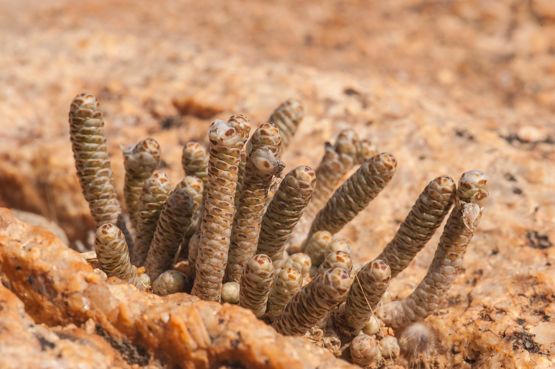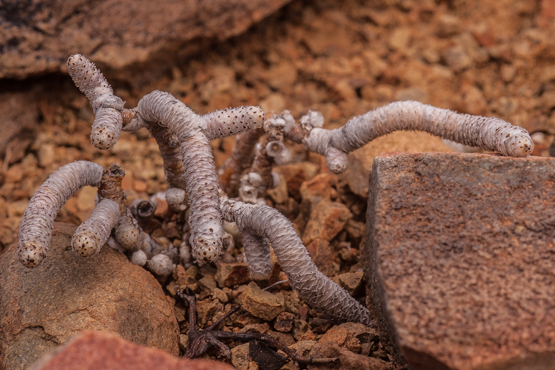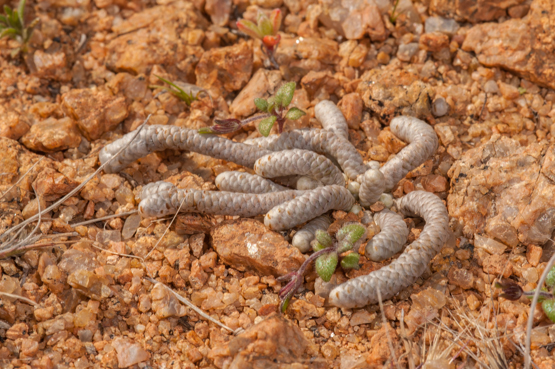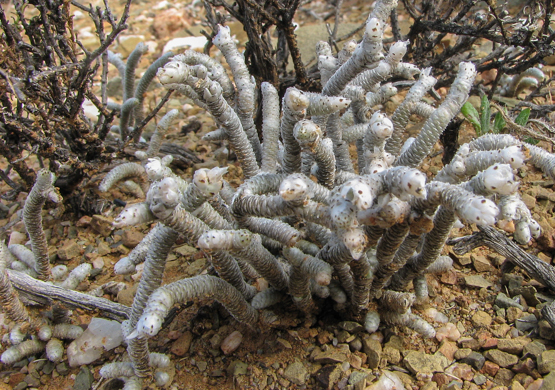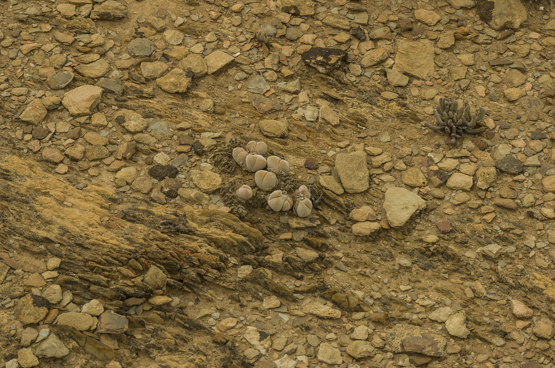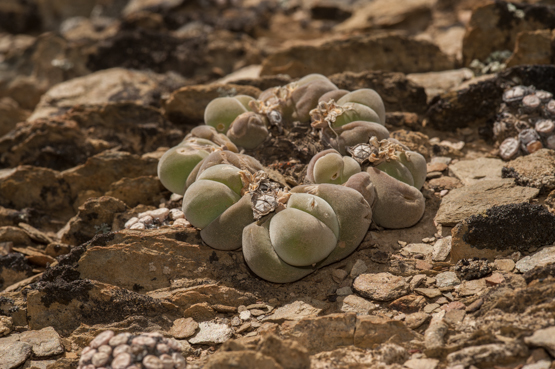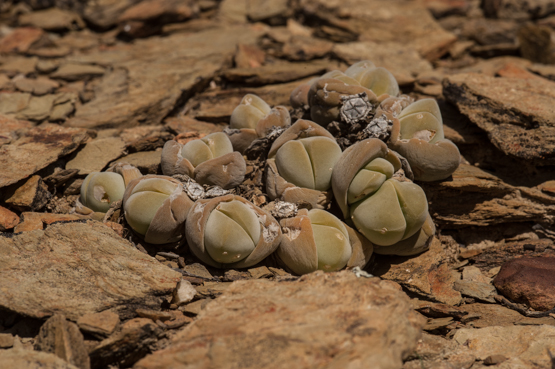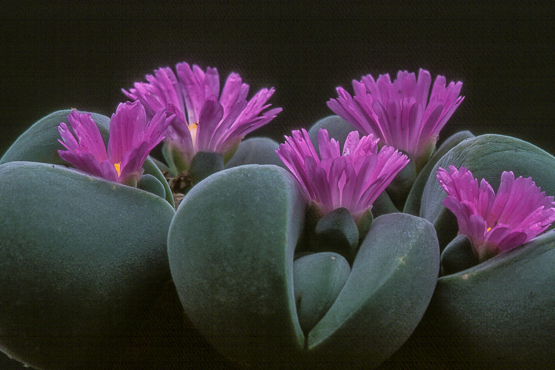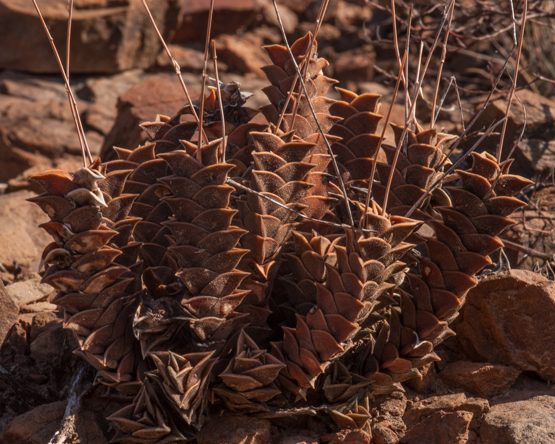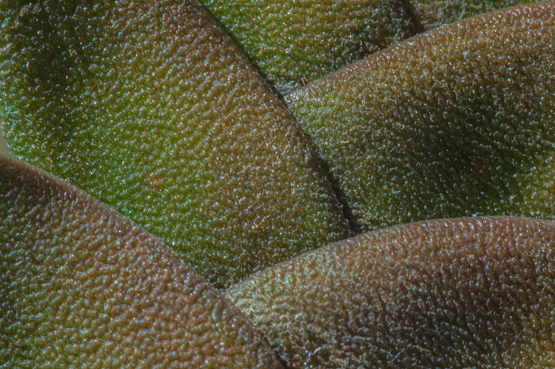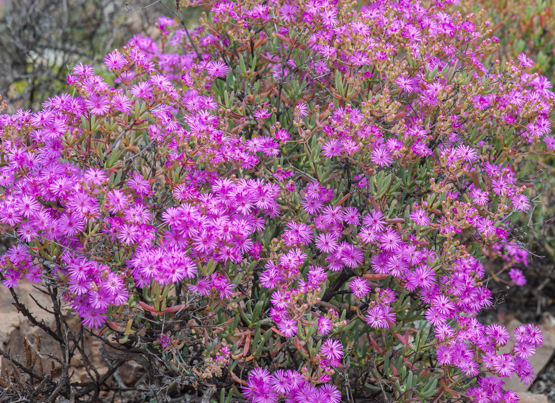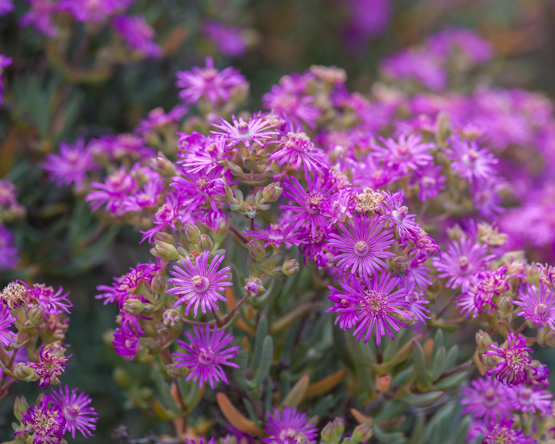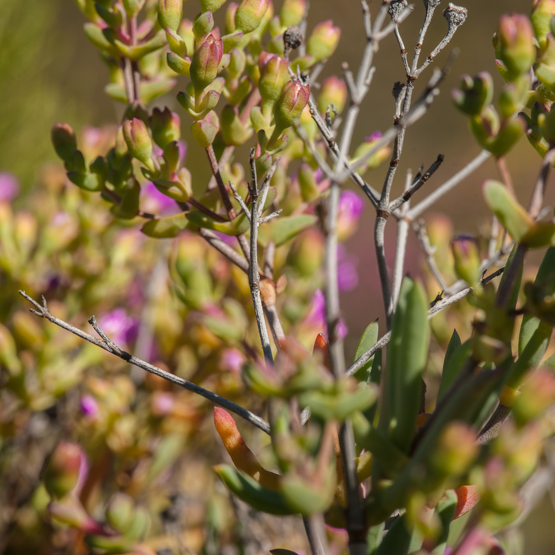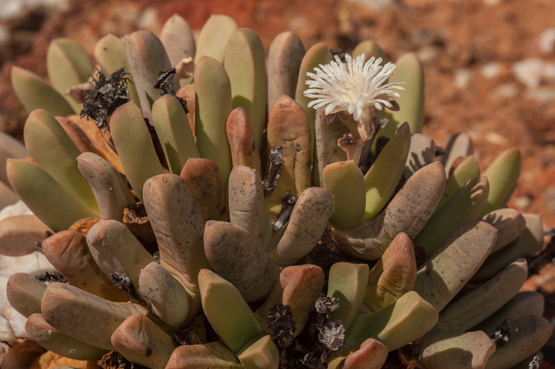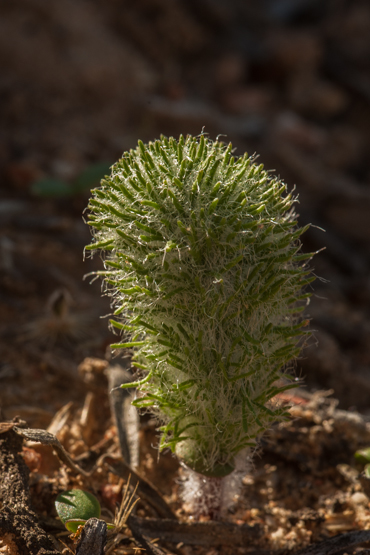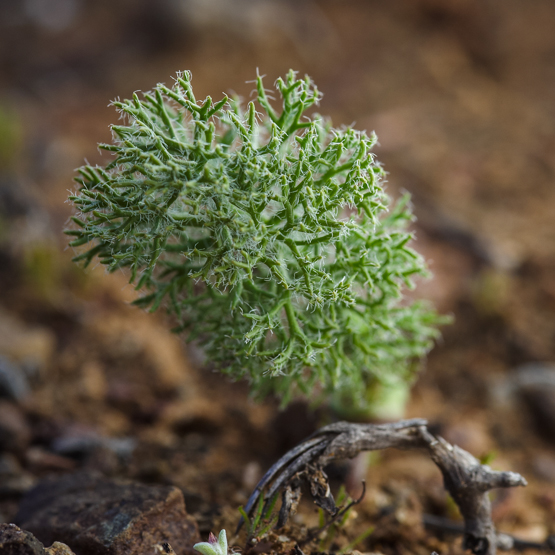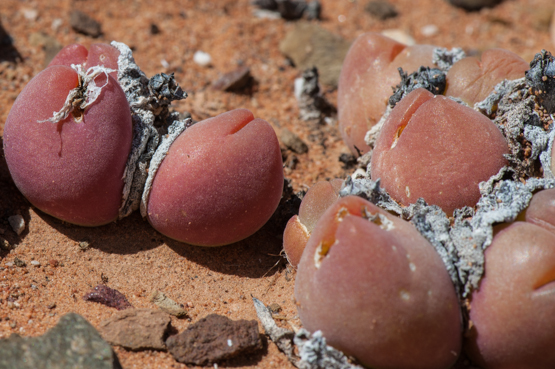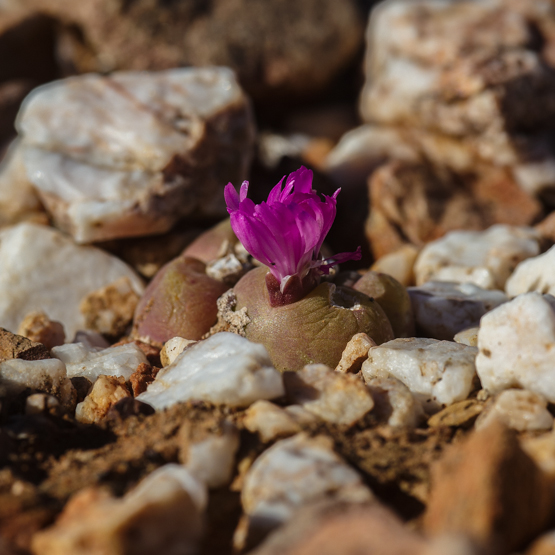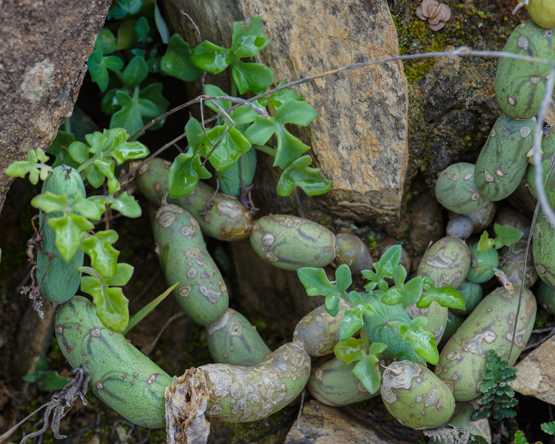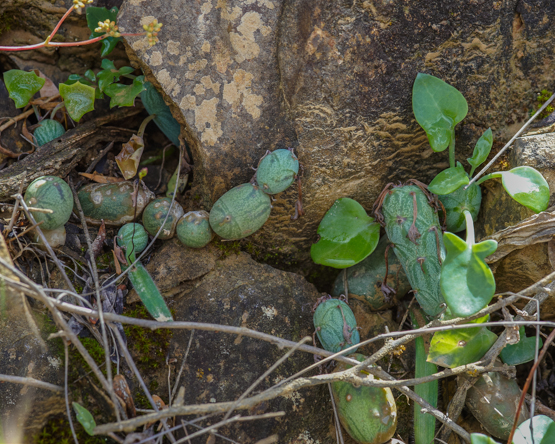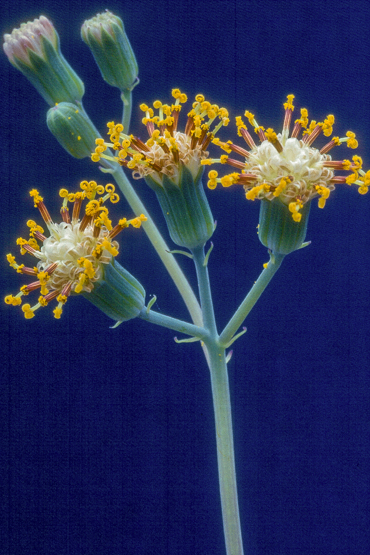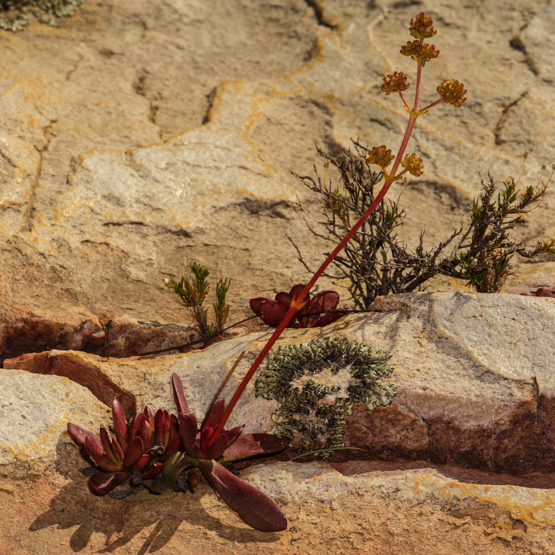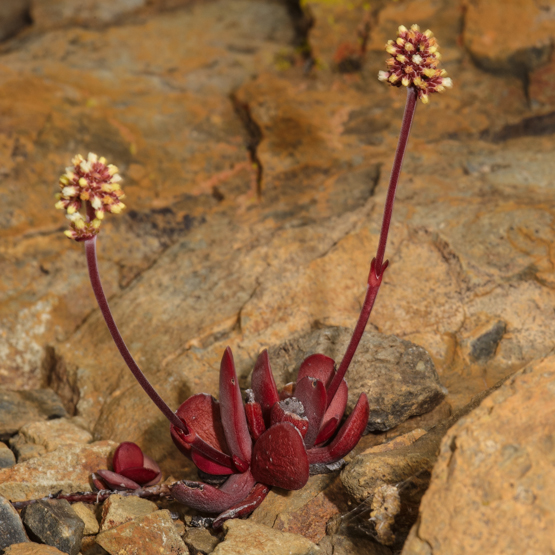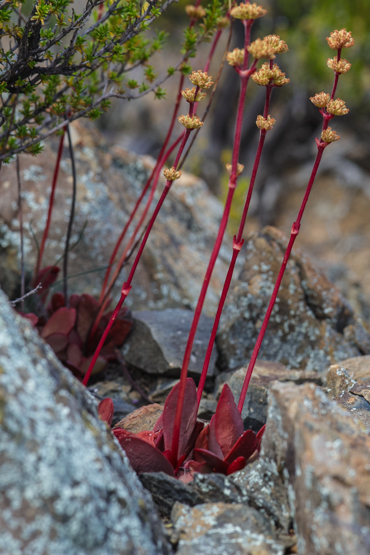Even if the name implies otherwise, this is far from the whitest Avonia, as many plants of this species look brownish, rather than bright white (see first picture).
Whatever the colouration, it is a nice little plant which does not get taller than about 4 cm. Sometimes a little caudex is visible (see bottom picture)
The species occurs in Namibia and northwestern South Africa.
Month: January 2014
Gibbaeum dispar
In cultivation this species is rather common, as it is one of the easier Gibbaeums to grow and flower (see picture at bottom).
In the wild it is only found on a few very dry shaly ridges near Vanwyksdorp. According to Nel’s Gibbaeum Handbook, it is the only Gibbaeum which does not grow together with any other species of the genus.
The plants look a bit like G. album, but they are darker and softer. The flowers appear in April.
Haworthia viscosa
Although rather variable, this species is easy to identify (H. nigra is the only other Haworthia in which the leaves are arranged in three ranks). The species is tall as Haworthias go: up to 30 cm. It is widely distributed from halfway between Laingsburg and Sutherland, throughout the central, eastern and southern Karoo and the Little Karoo, with an outlying habitat near Graaff-Reinet. In shade the plants are green, but one often encounters them in very arid places in full sun, where they usually become brownish, reddish or orange.
Ruschia pungens
Shrubby Mesembs are often difficult to identify with the help of literature. Once a more knowledgeable person has given you the right name, it usually seems hard to believe that you didn’t get there under your own steam.
This species is a case in point. Especially older plants are easily recognized: robust shrubs of up to a meter tall with the old inflorescences remaining on them for several years. These remains are hard and spiny, giving rising to the specific epithet.
R. pungens is a widespread species, occuring from Montagu to the Eastern Cape.
Nelia pillansii
Eriospermum paradoxum
The family Eriospermaceae contains only one genus, with about a hundred species. The name Eriospermum means woolly seed, referring to the long hairs that cover the seeds. The plants have underground tubers, which in most species produce only one leaf per year. In the case of E. paradoxum the leaf is about 7×6 mm, bearing a peculiar and distinctive tree shaped outgrowth (enation), which may be up to 11 cm long and 3 cm wide. The leafing period is May to October, slightly overlapping the flowering time (April/May).
E. paradoxum has a wide distribution in the winter rainfall area, from the Richtersveld in the north-west to near Grahamstown in the Eastern Cape, on sandy or clayey soils.
Gibbaeum nuciforme 2
Gibbaeum nuciforme (G. cryptopodium) 1
A widely distributed species (from Zebra, between George and Oudtshoorn, to the Montagu area), often locally abundant on loamy soils with quartz pebbles.
The very soft, almost translucent bodies lie flat on the ground (cryptopodium literally means “with hidden foot”) and in dry periods often almost disappear from sight. In the rainy season they are yellowish green, often turning red in the dry period. They are more or less round or egg-shaped (nuciforme = shaped like a nut).
To be continued.
Senecio (Curio) articulatus
In 1997 Senecio articulatus was placed in the genus Curio, together with a number of other succulent Senecios. As the changes were published in a not very well known journal, they have not been generally accepted (yet?).
Poor old S. articulatus must be in an identity crisis by now, because since it was named first, it has been placed in four different genera (Cacalia, Kleinia, Senecio and now Curio).
Maybe we should just stick to the beautifully descriptive Afrikaans name Worsies (sausages).
The species is widespread from Montagu to Uitenhage, on rocky slopes, usually in (partial) shade.
Crassula clavata
Usually the plants show the deep purplish red colours that you see here, in which case they are easy to recognize, but sometimes the leaves are green or yellowish green, making identification less straightforward.
As a rule the leaves are glabrous, but in the isolated Richtersveld populations they are softly hairy. Most of the populations occur in the mountains bordering the Karoo southwards towards Touwsrivier and Prince Albert, in rock crevices and shallow pockets of soil.
The flowers appear in September and October.
